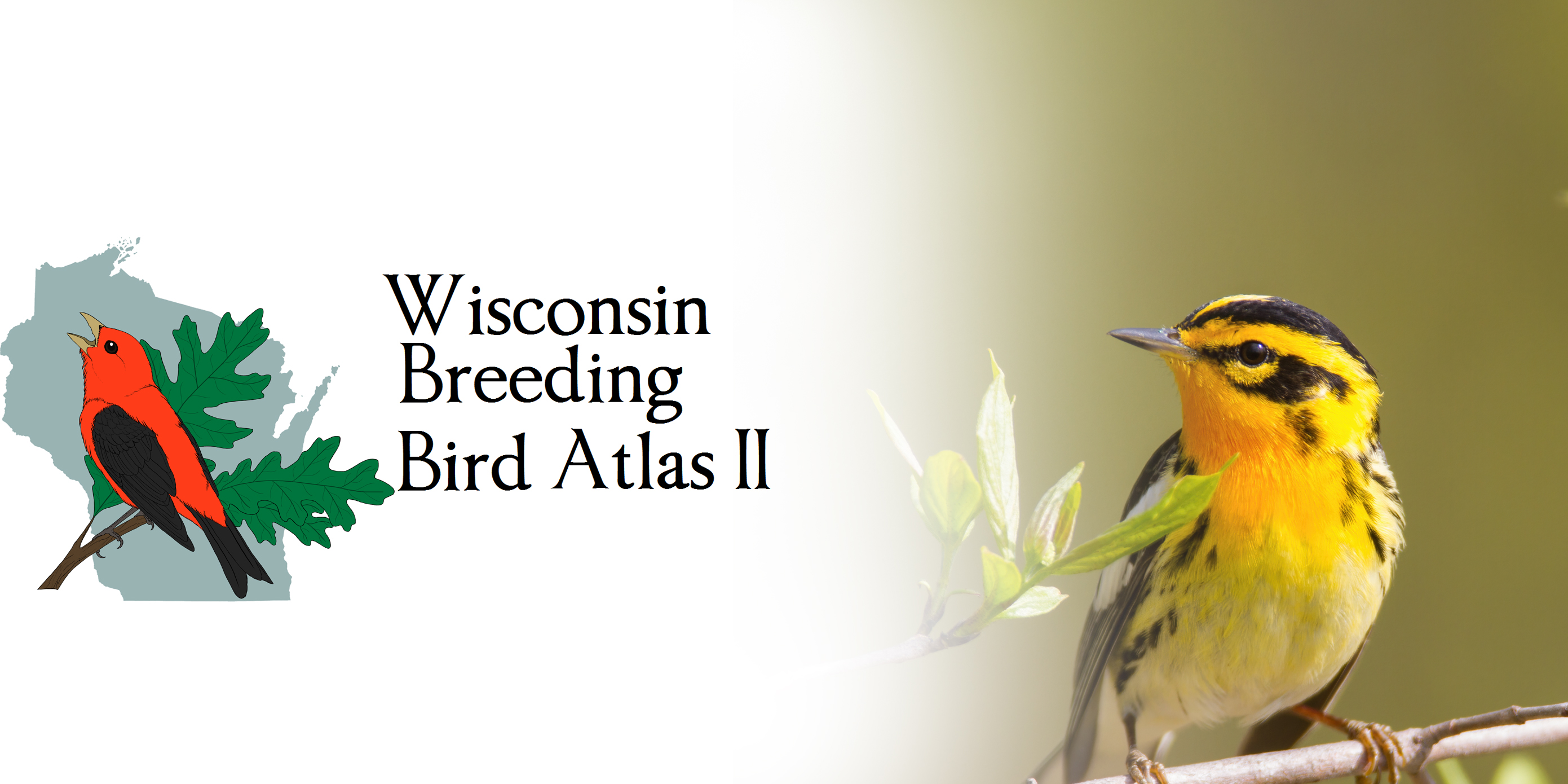What is the atlas?
Wisconsin Breeding Bird Atlas II is a comprehensive field survey that documents the distribution and abundance of breeding birds all across Wisconsin.
Why is it important?
This atlas replicates the methods of the first Wisconsin Breeding Bird Atlas, and will provide critical information on changes in bird populations to aid conservation and management.
How does it work?
• You observe birds, while noting your location, breeding behaviors, and survey effort
• You go to the Atlas eBird website to enter your observations
I already eBird, how is it any different?
1. You must use the custom Atlas eBird portal to report atlas observations. Every time you observe breeding behavior in the field, enter your entire checklist into the Atlas eBird portal. You can use your existing username and records will show up in your regular eBird account. Read more here about when to use each portal.
2. You’ll want to make sure you are plotting birds within the correct atlas block. Interactive and static block maps are available on the Atlas handbook and materials portion of the webpage. A block overlay pops up when you pull up the map in Atlas eBird to plot your birding location.
3. You’ll be assigning breeding codes to bird species you observed exhibiting breeding behaviors when appropriate. We have a simple list of breeding codes, full definitions of breeding codes, a tutorial helping you understand when to use breeding codes, and a breeding guideline bar chart indicating when each species is likely to be breeding in your area.
I don’t eBird. It’s too hard.
It’s really not, we promise! We have created a series of tutorials walking you through the process. Start with these — you can do it!
Submitting a single incidental observation
Submitting a complete checklist
Who should participate in the atlas?
Anyone can report breeding bird observations in Wisconsin. Robin nesting in your yard? Report it! We encourage experienced birders to sign up as the principal atlaser for an atlas block, but gladly accept sightings across the state from anyone who can identify a bird showing breeding behavior. The first atlas involved over 1,600 people and we anticipate at least that many will help this time around.
When do I start Atlasing?
Right now! The atlas started at the beginning of 2015 and will continue through December 2019.
What resources are there if I need help?
• The Atlas Handbook is your complete guide for all Atlas information and how-to instructions
• Contact your county coordinator for information about blocks, advice on Atlasing in your local area and guidance on your checklists
• Post photos and questions to get feedback from other atlasers on the Atlas Photos & Discussion Facebook group page.
• Atlas Tutorial articles are posted weekly on the Atlas eBird site
• Attend a local in-person training session with an Atlas volunteer
• Ask your Atlas questions on our online forum
• More resources are updated constantly on the Atlas website
How can I follow what’s going on with the atlas?
• Sign up to receive Atlas email updates and follow the Atlas on Facebook
Why should I care?
Wisconsin has a proud tradition of being at the forefront of bird and wildlife conservation. However, many bird species in our state are currently declining. To conserve them, we need a better understanding of their current status and distribution. This is an opportunity for you to be part of a larger project -- possibly the largest citizen science project ever in the state -- and one that will inform conservation and protect birds and wildlife in Wisconsin for decades to come. Join us!
Why conduct a second atlas?
The Wisconsin Breeding Bird Atlas II will run from 2015 to 2019 and will update and expand on the findings of the first atlas, allowing us to measure changes in bird populations since the last survey and to gauge future changes to provide critical data for conservation for years to come. The first Wisconsin Breeding Bird Atlas, conducted from 1995 to 2000, represented the largest coordinated field effort in the history of Wisconsin ornithology, and provided many insights into Wisconsin’s bird community that DNR and others use to make decisions regarding how to manage state lands and how to conserve birds.
How did this get started?
The Atlas is a volunteer effort, with birdwatchers, nature centers, nonprofit organizations and government agencies coming together in a project coordinated jointly by the Wisconsin Society for Ornithology, the Wisconsin Department of Natural Resources, and the Western Great Lakes Bird and Bat Observatory. Meet the Wisconsin Breeding Bird Atlas II planning team.
